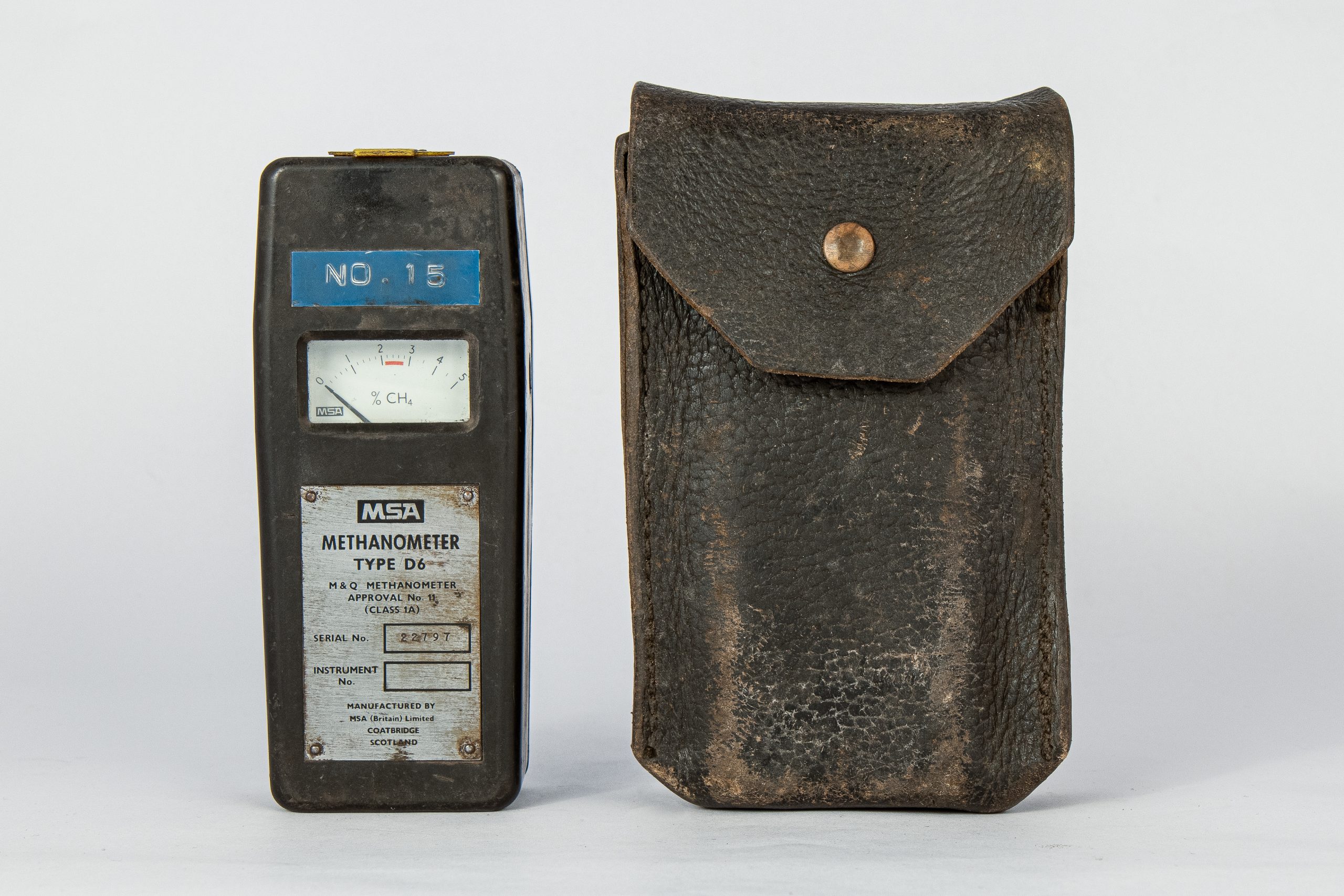Safety in Numbers
Measuring Explosive Methane in the Teralba Colliery
Imagine spending hours underground every day, working in a dark, damp, confined space, and breathing powdered coal dust that also coats your hair, skin and clothing. Add to that a constant, risk of physical injury, cave-ins, and the threat of explosions caused by any burning substance coming into contact with the methane gas seeping out from the coal, and we begin to understand the daily experience of coal miners throughout mining history.
Fortunately, since the turn of the twentieth century, their safety has been improved by devices such as the methanometer, for measuring the levels of the highly flammable gas, methane, also known as fire damp. This D6 model, approved for use in 1972 and used at the Teralba Colliery in the Hunter Valley, was manufactured by Mine Safety Appliances Pty Ltd (MSA). The company pioneered the introduction of these portable methane detectors and is now a global leader in worker safety equipment.
Teralba Colliery, which operated between 1978 and 2001, had an abundance of methane gas, which forms as ancient plant matter transforms into coal. Miner Phillip Owen remembered that ‘Teralba was one of the gassiest places…’ So he was very surprised one day to find fellow mine workers smoking at the bottom of the shaft! Another miner, David Jones, also remembered Teralba as the ‘gassiest pit I’ve ever worked at’, and that numerous cigarette butts were found in a disused section of the pit ‘… it could have blown everybody up!’
Canaries were traditionally used in mines to detect dangerous gases, and then electric safety lamps (about the turn of the twentieth century), which indicated high levels of methane by an elongated flame. But thousands of miners were still dying in explosions. In the early twentieth century in Pennsylvania, numerous mine explosions influenced the invention of the methanometer. The new instrument revolutionised gas detection and was adopted in mines across the world, where they are still in use today. Methanometers are carried by superintendents for spot checking areas where explosive powered machinery is used, and for regular gas monitoring. If the dial shows a reading that indicates an excessive level of methane, he sounds the alarm and arranges for the ventilation of that area.










